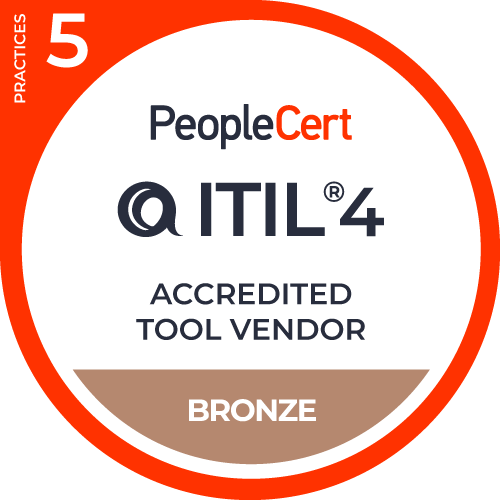SQL Server Integration Services (SSIS) has been a cornerstone in the realm of data integration, providing robust solutions for Extracting, Transforming, and Loading (ETL) data. The release of SSIS 469 marks a significant evolution in this toolset, offering advanced features and performance improvements.
In this comprehensive guide, we’ll explore the essentials of SSIS 469, highlight its key features and benefits, and provide a detailed comparison with SSIS 816. Whether you’re considering an upgrade or evaluating your data integration options, this post will equip you with the insights needed to make informed decisions.
What is SSIS 469?
SSIS 469 is an advanced iteration of SQL Server Integration Services, designed to address the evolving needs of modern data integration.
In the context of IT Service Management (ITSM) and IT Asset Management (ITAM), data integration plays a critical role. It allows organizations to break down data silos, ensuring that information flows seamlessly across departments and systems.
So, this version introduces several enhancements over previous versions, including performance optimizations, improved scalability, and a more intuitive user interface. It is tailored for organizations that handle large volumes of data and require robust solutions to manage and integrate this data effectively.

What is Data Management as a Service (DMaaS)?
Versions of SSIS
To understand the evolution of SSIS, it's helpful to review its major versions and their release dates. Here’s a list of SSIS versions and their corresponding release dates:
- SSIS 2005 – Released in November 2005. This was the first version of SSIS, introduced as part of SQL Server 2005, and marked a significant improvement over the previous Data Transformation Services (DTS) in SQL Server 2000.
- SSIS 2008 – Released in August 2008. This version was part of SQL Server 2008 and introduced new features such as data mining, improved error handling, and better performance.
- SSIS 2012 – Released in April 2012. SSIS 2012, included with SQL Server 2012, brought enhancements like the Project Deployment Model and better support for integration with Microsoft’s cloud services.
- SSIS 2014 – Released in April 2014. This version offered improved performance, better support for cloud-based data sources, and the introduction of the SSIS Catalog.
- SSIS 2016 – Released in June 2016. SSIS 2016 introduced features such as enhanced support for big data, improvements in the execution environment, and better integration with Azure.
- SSIS 2017 – Released in October 2017. SSIS 2017 included enhancements for hybrid cloud data integration, better support for advanced analytics, and additional connectors.
- SSIS 2019 – Released in November 2019. SSIS 2019 continued to build on cloud integration capabilities and improved support for enterprise data integration needs.
- SSIS 2022 – Released in November 2022. This version introduced new features for better performance, security enhancements, and improved support for modern data integration scenarios.
- SSIS 469. SSIS 469 represents the latest advancements in data integration technology, offering enhanced performance, scalability, and user-friendly features.
Key features of SSIS 469
1. Enhanced performance
SSIS 469 brings significant performance improvements over its predecessors. With optimizations that boost data processing speeds, this version reduces latency and accelerates ETL processes. This enhancement is particularly beneficial for organizations that work with large datasets and need to ensure timely data availability.
2. Improved scalability
One of the standout features of SSIS 469 is its enhanced scalability. It can handle larger volumes of data more efficiently, making it ideal for businesses experiencing growth or managing extensive data operations. This scalability ensures that SSIS 469 can meet the demands of expanding data environments without compromising performance.
3. User-friendly interface
The updated interface in SSIS 469 simplifies the design and management of data integration workflows. The user-friendly design reduces the complexity of creating and maintaining data flows, making it easier for users to navigate and utilize the tool effectively.
4. Advanced data transformation capabilities
SSIS 469 expands its data transformation functionalities, offering more robust tools for data cleansing, aggregation, and transformation. These enhancements improve data accuracy and quality, ensuring that users can rely on the data for reporting and analytics.
5. Enhanced connectivity
Improved connectivity options in SSIS 469 allow for seamless integration with various data sources and destinations. This versatility ensures compatibility with a wide range of data formats and systems, facilitating more comprehensive data integration solutions.
Why upgrade to SSIS 469?
Upgrading to SSIS 469 provides several benefits that can significantly enhance your data integration processes. Here’s why making the switch can be advantageous:
1. Boosted efficiency
The performance improvements in SSIS 469 lead to faster data processing and reduced execution times. This efficiency boost enables quicker insights and more responsive decision-making, which can be crucial in today’s fast-paced business environment.
2. Scalable solutions
SSIS 469’s scalability ensures that it can handle increasing data volumes without performance degradation. This capability is essential for businesses that are expanding or managing large-scale data operations, providing a solution that grows with their needs.
3. Streamlined workflow management
The intuitive interface of SSIS 469 simplifies the design and management of data integration tasks. This ease of use reduces the learning curve for new users and enhances productivity, allowing teams to focus on more strategic aspects of data management.
4. Improved data quality
Advanced data transformation capabilities in SSIS 469 help maintain high data quality. Accurate and reliable data is essential for effective reporting and analytics, and SSIS 469 ensures that the data used for business intelligence is of the highest standard.
5. Versatile data connectivity
Enhanced connectivity features in SSIS 469 provide the flexibility needed to integrate with diverse data sources and systems. This versatility is beneficial for organizations with complex data environments, ensuring seamless data integration across various platforms.
SSIS 469 vs. SSIS 816: A comparative analysis
To understand the advancements in SSIS 469, it’s useful to compare it with SSIS 816, another significant version of SQL Server Integration Services. This comparison will highlight the key differences and improvements in SSIS 469.
1. Performance and Speed
SSIS 816: While SSIS 816 offered robust performance, it had limitations in handling large volumes of data efficiently. Performance tuning and optimization were necessary to achieve optimal speed.
SSIS 469: SSIS 469 introduces enhanced performance optimizations that significantly boost data processing speeds. This version reduces latency and accelerates ETL processes, providing a more efficient solution for large-scale data operations.
2. Scalability
SSIS 816: SSIS 816 had scalable capabilities but faced challenges when managing very large datasets or complex data integration scenarios. Users often needed to implement additional solutions to handle data growth.
SSIS 469: With improved scalability, SSIS 469 can handle larger volumes of data more effectively. It is designed to grow with your data needs, ensuring that performance remains consistent even as data environments expand.
3. User interface
SSIS 816: The interface in SSIS 816, while functional, could be cumbersome for users managing complex data workflows. The learning curve was steeper, and customization options were limited.
SSIS 469: SSIS 469 features a redesigned, user-friendly interface that simplifies the creation and management of data integration tasks. This update reduces the learning curve and enhances overall usability, making it easier for users to navigate and manage their data workflows.
4. Data transformation
SSIS 816: Data transformation capabilities in SSIS 816 were robust but limited compared to newer versions. Users had to rely on additional tools for more advanced transformation needs.
SSIS 469: SSIS 469 offers expanded data transformation functionalities, providing more advanced tools for data cleansing, aggregation, and transformation. These enhancements improve data accuracy and quality, reducing the need for external tools.
5. Connectivity
SSIS 816: Connectivity options in SSIS 816 were adequate but required manual configuration for certain data sources and destinations. Integration with diverse data formats could be challenging.
SSIS 469: SSIS 469 includes enhanced connectivity features that facilitate seamless integration with a wide range of data sources and destinations. This versatility ensures that users can work with various data formats and systems more easily.
How to implement SSIS 469
Implementing SSIS 469 involves several key steps to ensure a successful deployment and integration into your data workflows:
1. Assessment and planning
Begin by assessing your current data integration needs and identifying how SSIS 469 can address them. Consider the performance improvements and scalability benefits that SSIS 469 offers and plan how these features will fit into your existing workflows.
2. Installation and configuration
Follow the installation guidelines provided for SSIS 469, ensuring that your system meets the necessary requirements. Configure the tool according to your specific data integration needs, taking advantage of the enhanced features and capabilities.
3. Design and development
Utilize the upgraded interface and features to design and develop your data integration tasks. Leverage the advanced transformation capabilities to optimize your data flows and ensure that the data is processed accurately and efficiently.
4. Testing and validation
Conduct thorough testing to verify that your SSIS 469 implementation meets your performance and data quality expectations. Validate that the tool integrates seamlessly with your existing systems and that data flows are functioning as intended.
5. Deployment and monitoring
Deploy your SSIS 469 solution and implement monitoring processes to track its performance. Regularly review performance metrics and user feedback to make any necessary adjustments and ensure that the tool continues to meet your data integration needs.
Best practices for using SSIS 469
To maximize the benefits of SSIS 469, consider the following best practices:
1. Optimize data flows
Regularly review and optimize your data flows to ensure that they are running efficiently. Utilize SSIS 469’s performance enhancements to streamline ETL processes and reduce processing times.
2. Leverage advanced transformation tools
Take advantage of SSIS 469’s advanced data transformation capabilities to enhance data quality and accuracy. Use these tools to perform complex data cleansing and aggregation tasks more effectively.
3. Monitor and maintain
Implement monitoring solutions to keep track of SSIS 469’s performance and address any issues promptly. Regular maintenance will help ensure that the tool continues to perform optimally and meets your data integration requirements.
4. Train users
Provide training for users to familiarize them with the new interface and features of SSIS 469. This will help reduce the learning curve and improve overall productivity.
5. Document and review
Document your data integration processes and configurations to maintain clarity and consistency. Regularly review and update documentation to reflect any changes or enhancements made to your SSIS 469 implementation.
Final thoughts
SSIS 469 represents a significant advancement in data integration technology, offering enhanced performance, scalability, and user-friendly features. By upgrading to SSIS 469, organizations can improve their data integration processes, maintain high data quality, and manage large datasets more effectively. Comparing SSIS 469 with SSIS 816 highlights the improvements and innovations introduced in this latest version, making it a valuable tool for modern data integration needs.
Whether you’re implementing SSIS 469 for the first time or upgrading from a previous version, understanding its features and benefits will help you make the most of its capabilities. With its advanced performance and scalability, SSIS 469 is well-equipped to meet the demands of today’s data-driven business environment.
Frequently Asked Questions (FAQs)
1. What is SSIS 469?
SSIS 469 is an advanced version of SQL Server Integration Services designed to enhance data integration processes with improved performance and scalability.
2. How does SSIS 469 differ from SSIS 816?
SSIS 469 offers enhanced performance, improved scalability, a user-friendly interface, advanced data transformation capabilities, and better connectivity compared to SSIS 816.
3. What are the key benefits of upgrading to SSIS 469?
Upgrading to SSIS 469 provides boosted efficiency, scalable solutions, streamlined workflow management, improved data quality, and versatile data connectivity.
4. How do I implement SSIS 469?
Implementing SSIS 469 involves assessing your needs, installing and configuring the tool, designing and developing data integration tasks, testing and validating, and deploying the solution.
5. What are some best practices for using SSIS 469?
Best practices include optimizing data flows, leveraging advanced transformation tools, monitoring and maintaining the tool, training users, and documenting and reviewing your data integration processes.


